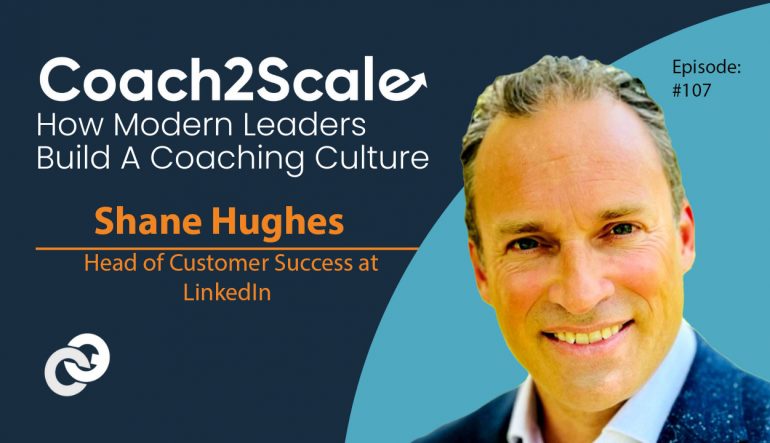Scaling teams inside matrixed organizations is rarely about speed alone. Shane Hughes, Head of Customer Success at LinkedIn and former Salesforce executive, argues that real growth comes from slowing down to coach with intention, aligning stakeholders early, and focusing relentlessly on customer value. In this conversation, he shares how leaders can avoid the trap of “chasing renewals” and instead build advocacy from the start by connecting adoption to measurable business outcomes.
Shane also pulls from his experience leading teams that grew revenue from millions to billions to highlight what separates managers from true coaches. He explains why curiosity is the foundation of influence, how consistency compounds impact, and why high performers act more like consultants than communicators. Whether you’re a CRO, frontline manager, or rep aiming to lead, his lessons offer a clear path to scaling without losing your edge.
Chief Revenue Officers know the grind. Pressure builds quarter after quarter, and too often retention strategies collapse into a last-minute scramble to “save the renewal.” Shane Hughes, Head of Customer Success at LinkedIn and a former Salesforce leader, argues that this approach is both flawed and costly. In his view, renewals are not about rescue missions. They’re secured by the work done in the first 90 days after the deal is signed.
For CROs, that shift is critical. The most expensive failure in a revenue organization isn’t missing a new logo acquisition; it’s churning a customer that should have grown with you. Hughes highlights that adoption is not the finish line. Customers using your product is one thing; customers achieving measurable business outcomes with it is another. Reps and managers often conflate the two, but only the second drives advocacy and expansion. CROs should be asking their teams: Are we coaching customers to outcomes, or are we chasing dashboards of activity?
Hughes also underscores the role of curiosity as a leadership lever. High performers don’t just respond to customer requests. They ask questions that challenge assumptions, reframe problems, and reveal hidden value. That same mindset applies internally. At Salesforce, Hughes learned that influence inside a matrixed enterprise comes not from pushing harder, but from patient lobbying across stakeholders. In other words, slowing down to build alignment accelerates impact later. For CROs leading across functions, that principle is just as true.
Perhaps Hughes’ most actionable point for revenue leaders is his distinction between coaching and chasing. Managers who chase activity metrics often confuse motion with progress. Coaching, by contrast, is about consistency and compounding. When leaders focus on sharpening how their teams think, not just what they do, they create predictable impact. The message for CROs is straightforward: invest in coaching managers to think like consultants, not scorekeepers.
Scaling teams without losing effectiveness is a balancing act, especially in complex organizations. Hughes’ career, from driving Salesforce CX from $3B to $30B to building LinkedIn’s customer success muscle, illustrates that growth at scale comes down to consistent coaching, curiosity-driven influence, and an early focus on customer value. CROs who adopt these lessons won’t just protect renewals; they’ll unlock durable growth.
🎧 Listen to the full episode: on [Spotify / Apple / YouTube]






